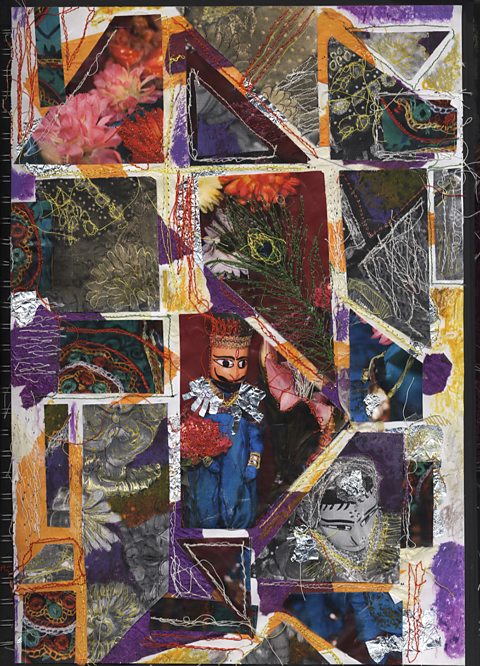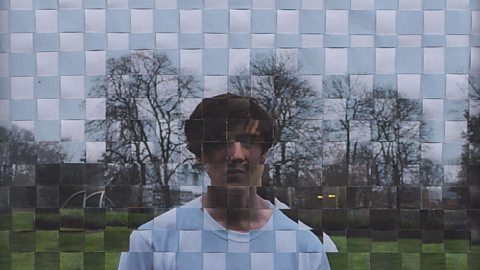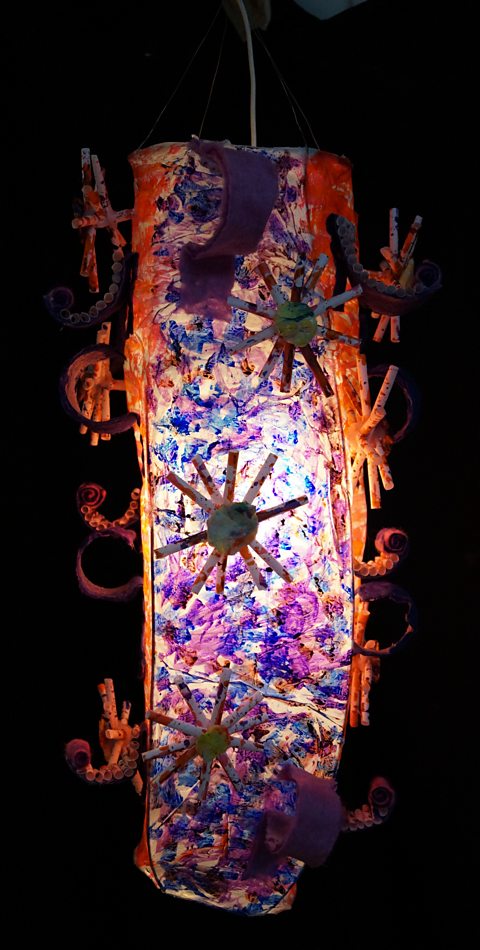Experimenting with materials in design
2D design


Whether you work with real materials or prefer digital design, you can still experiment with materials and techniques just as you would if drawing or painting.
Graphic communication
Techniques
- Create imagery using painting or drawing techniques.
- Cut up drawings or paintings to create shapes or lettering.
- Use cut paper collageA technique which involves making an image from sticking pieces of paper, photographs, textiles and/or objects onto a surface. to create simplified imagery and lettering.
- Use photography to capture imagery.
- Scan your images and use digital editing software to experiment with their scale, colour saturation and contrast.
- Use drawing and painting software to add marks to scanned images
- Import images onto the computer and use image editing software to add lettering in different fonts and layouts.
Repeat pattern design
Techniques
- Create a motifAn image, design or idea that is repeated in a work of art or design. The basic unit that is repeated to create a pattern. using expressive art techniques, such as drawing, painting or printing.
- Use cut paper collage to simplify and styliseTo adapt to a particular style by making visual changes. the motifs.
- Trace the motifs and transfer into different repeat formations.
- Experiment with changing the scale of the motif.
- Scan or import photographs of motifs and use a software package to experiment with different repeat patterns. You can easily change colours or proportions.
- Create work on different digital layers and try combining different patterns and images.

3D design

Your experiments with materials and techniques could relate to the final product, structure or space you are designing.
They could also be about how you will present, using models, maquettes or drawings. Depending on the design area, different materials and techniques may be appropriate.
Product, interior, environmental design and architecture
Designers in these areas often make rough sketch modelA rough model, often made with cheap materials, used to help solve problems and make decisions. using card or corrugated cardboard to work out their ideas. Final design models are often made using card or foamboardLightweight, rigid card with a foam core which is often used for architectural models.. It is not unusual to leave the designs unpainted.
In product design, card and foamboard is often used to make concept models. If you are creating organic forms another modelable material such as clay or modelling compound may have to be used.
If you work digitally, creating models using a 3D printerA machine which can print 3-dimensional objects using molten plastic or laser cutterA machine which can be programmed to cut materials very precisely using a laser. is another way to show design concepts.
perspective drawing Drawing which gives an illusion of 3-dimensional depth or distance. Common techniques include one point perspective and two point perspective. can be used to show ideas. This can be done with pencils or pens or made digitally using various software packages.
Try out different textures and colours of materials in your work to see how they would affect your final design.
Just because you are working in 3D doesn't mean you can't use drawing, painting or printing techniques. Try using images, abstract designs or patterns on surfaces.
More guides on this topic
- Finding inspiration - AQA
- Responding to stimuli - AQA
- Analytical drawing - AQA
- Developing ideas - AQA
- Creating a design brief - AQA
- Recording and observing - AQA
- Annotating your work - AQA
- Analysing and evaluating - AQA
- Assessment objectives and presenting your work - AQA
- Externally set assessment - AQA